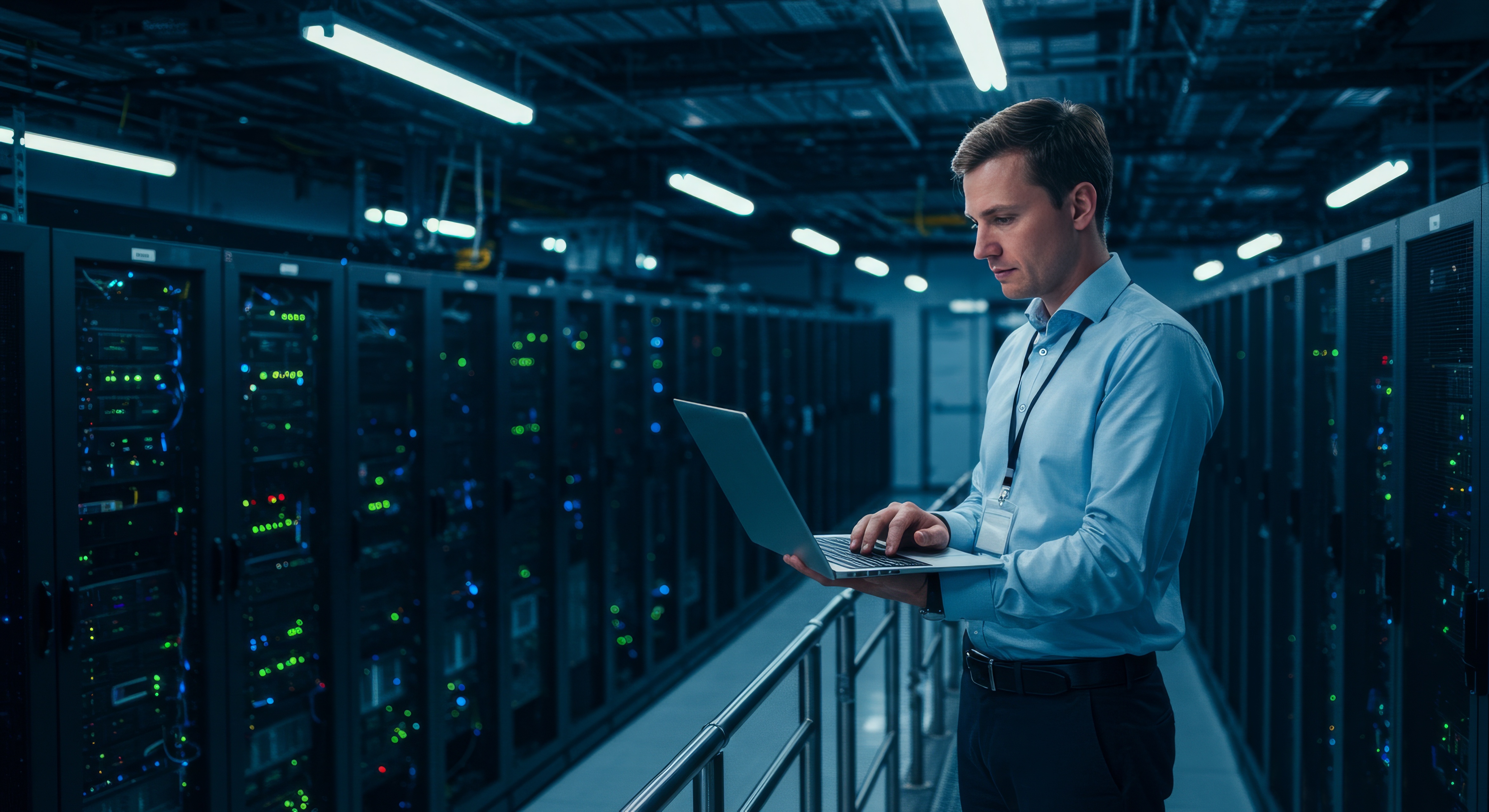|
Informative

.svg)

If you’re building, operating or investing in a data center, you’ve probably heard terms like Tier I, Tier II, Tier III and Tier IV thrown around. These aren’t just buzzwords - they define the facility’s resilience, redundancy and uptime expectations.
In this guide, we’ll break down what each tier means, how they’re certified and what you should consider when planning your own build. Whether you’re working on a hyperscale AI data center or a modular edge facility, understanding tiers is essential for cost, compliance and customer trust.
Data center tiers are a classification system developed by the Uptime Institute to describe the expected availability and fault tolerance of a facility.
Each tier builds on the previous one, adding more redundancy and uptime guarantees - but also higher costs and longer construction timelines.
Extra insight: Many companies use Tier I facilities for testing environments, development labs or backup storage where performance isn’t mission-critical. However, relying on Tier I for production workloads can cause major disruptions if outages occur.
Extra insight: Tier II facilities are often seen as a “step up” for companies scaling beyond Tier I. They work well for growing businesses but can become a bottleneck if customers or regulations demand 24/7 uptime.
Extra insight: Tier III is often considered the “sweet spot” for most enterprises. It balances cost and uptime, making it the most common choice for commercial data centers worldwide.
Extra insight: Tier IV is the gold standard but is not always necessary. Many businesses overestimate their need for fault tolerance - unless downtime costs millions per hour, Tier III is often sufficient. Tier IV is typically reserved for hyperscale cloud providers or organizations where downtime is catastrophic.
Uptime Institute provides two main certifications:
Certification is optional, but it can significantly boost credibility with clients, regulators and investors. Many operators pursue it as proof of reliability, especially when serving enterprise or government workloads. Others may skip certification due to the high costs, lengthy review process or because their facilities are only used internally where external validation isn’t required.
Selecting the right data center tier comes down to balancing risk tolerance, cost and long-term strategy:
Define how much downtime your operations can tolerate. Tier I may work for non-critical workloads, but mission-critical systems (finance, healthcare, AI training) demand Tier III or IV.
Higher tiers mean higher redundancy, which drives up both capital and operational expenses. Tier III and IV require duplicate power, cooling and distribution paths.
Service-level agreements (SLAs) often dictate uptime. Cloud providers, SaaS firms and financial institutions usually can’t settle for less than Tier III.
While you can sometimes upgrade from Tier II to Tier III, jumping tiers is costly. Planning ahead for AI workloads or hyperscale expansion can save millions later.
Other major cost drivers include location (land and permitting), local labor rates, utility interconnection and cooling/power density needs - especially for AI-ready designs.
Each data center tier (I-IV) comes with strict uptime, redundancy and operational requirements. Meeting them isn’t just about design - it’s about ongoing documentation and verification throughout the project. A connected construction management platform like INGENIOUS.BUILD supports compliance by:
With compliance baked into day-to-day workflows, teams can focus on delivery while ensuring tier certification is met.
Choosing the right data center tier isn’t just a technical decision - it’s a business one. The right classification determines not only uptime but also long-term costs, customer trust, and your ability to scale with emerging trends like AI and sustainability.
By aligning tier selection with your workload demands, budget and growth strategy, you can avoid costly overbuilding while still meeting critical performance requirements. And if you’re managing a new facility build or upgrade, having the right project management system in place is just as important as choosing the right tier.
Explore how INGENIOUS.BUILD helps keep data center projects on time, on budget, and fully compliant. Book a demo today to see how we can support your next build!
The four recognized data center tier levels - Tier I, Tier II, Tier III and Tier IV - were established by the Uptime Institute. Each level represents a higher standard of redundancy, resilience and uptime. Tier I is basic infrastructure, while Tier IV is fully fault-tolerant with the highest uptime guarantees.
A data center tier definition refers to the set of criteria that determine a facility’s infrastructure capabilities, redundancy and expected availability. These standards help operators, clients and investors understand a data center’s reliability without needing a technical deep dive.
Data center tier classification is progressive. Each higher tier builds upon the previous one by adding redundancy and fault tolerance. For example, Tier II adds redundant components to Tier I’s basic setup, Tier III introduces concurrent maintainability, and Tier IV achieves full fault tolerance.
The difference between Tier 3 and Tier 4 data centers comes down to fault tolerance. Both are concurrently maintainable, meaning maintenance can be done without downtime. However, Tier IV adds complete redundancy so that even if one system fails, operations continue without disruption.
Tier III vs. Tier IV: Tier IV can withstand equipment failures without impacting service (fault tolerance).